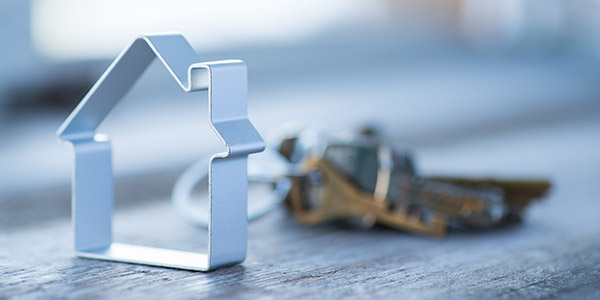Homeowners
How to Stop Paying Private Mortgage Insurance
January 29, 2021
When buying a home, your focus is often on getting the deal done with as low a down payment as possible. While that sounds like a savvy move, it can come with the added expense of a monthly insurance premium if your purchase down payment is less than 20%. And so, you may be asking yourself, "How can I stop paying for mortgage insurance?"
What kind of mortgage insurance do you pay?
First, let's take a look at your mortgage insurance. For conventional mortgages, you pay private mortgage insurance (PMI). According to the Urban Institute, most borrowers can expect to pay between $30 and $70 in monthly PMI premiums for every $100,000 borrowed. Your credit score and loan-to-value (LTV) ratio influence your PMI premiums.
With an FHA loan, a loan designed to make homeownership more affordable, the borrower pays a mortgage insurance premium (MIP). Insured by the Federal Housing Administration, FHA loans require borrowers to pay a one-time, upfront mortgage insurance premium of 1.75%, as well as ongoing monthly mortgage insurance that decreases as your loan balance falls.
For both conventional and FHA mortgages, insurance is an additional expense to the monthly principal and interest payments on your mortgage. However, both loans offer options for eliminating insurance once your home equity reaches certain levels and you meet certain requm,irements.
How do I stop paying private mortgage insurance?
With the recent rise in housing values across the country, now might be a good time to revisit your home's current market value to see if you have sufficient home equity to request the removal of your mortgage insurance. The rules for doing so, however, depend on the type of mortgage you have and when it originated. Here's a summary of what you can expect with each of your options.
Does PMI automatically cancel?
Under the Homeowners Protection Act of 1998 (HPA), your PMI premiums will automatically end once your loan balance declines to 78% of your original property value if you have had no payments that were late by 30 days within the last year or over 60 days late within the prior two years and your mortgage is current at the time of termination. Alternatively, if the property is your primary residence or 2nd home, you can initiate cancellation of the PMI if your loan balance is paid down to 80% as determined by:
- The original value of the property at the time you obtained the home loan to purchase your property
- Or the appraised value at the time you obtained the home loan on your last refinance
If you haven't yet paid down the home loan balance to 80% or less of the criteria mentioned above, you can obtain a new assessment of your home value and cancel the PMI if:
- Your loan has been repaid down to 80% or less of the current value if you've had the loan for at least 5 years
- Or your loan has been paid down to 75% or less of the current value if you've had the loan for at least 2 years
How can I get rid of PMI or MIP without 20% down?
- Consider a less expensive home. Try looking at homes in different areas, with less square footage, or even a home that needs some renovations you can safely and credibly DIY. This also gives you the chance to let equity build in the home over time, so when you sell, you'll have more for the down payment on your next home.
- Are you a military borrower? You can apply for a VA loan, which does not require mortgage insurance. However, there is a possible VA Guaranty Fee.
- A piggyback loan allows you to obtain a first mortgage covering 80% of the home price and a second mortgage that covers 10% of your purchase with the remaining 10% covered by your down payment.
Canceling MIP
Canceling insurance on FHA loans will depend on when your mortgage was originally made.
- To eliminate MIP on mortgages closed between July 1991 and December 2000, you will have to refinance into a new loan.
- For FHA loans applied for between January 2001 and June 2013, removing MIP requires three conditions to be met:
- You've paid MIP for at least five years on this mortgage.
- You've had no late payments in the last 12 months.
- Your LTV based on the original value of your home is 78%.
- On mortgages that were applied for after June 2013:
- MIP will be removed after 11 years if the original loan amount involves an LTV of 90% or less.
- In cases where the amount originally borrowed represented an LTV above 90%, MIP will exist as long as the loan does.
Refinancing
There is another option you can pursue to remove mortgage insurance from your life: refinancing. If the market value of your home has appreciated sufficiently or you have savings you can add to the transaction that will reduce the LTV to 80%, this option could remove the insurance premiums. It could also potentially improve your mortgage terms, lowering your monthly housing expense to a greater degree. Of course, this means having the appropriate credit qualifications and meeting other requirements.
Ready to purchase or refinance?
Remember, PMI and MIP are not forever, and they make buying a home possible – you just have to pay a premium to offset the risk with a lender. And if you don't feel ready to take on PMI or MIP, it may be wise to keep on saving. When you have enough money set aside for your down payment, you can start your search for a home in your price range.
To identify the option that aligns with your current financial circumstances and goals, you may want to reach out to the New American Funding team. We can guide your unique situation and get you focused on getting the funding you need to achieve your dream home.





 Smart Moves Start Here.
Smart Moves Start Here.